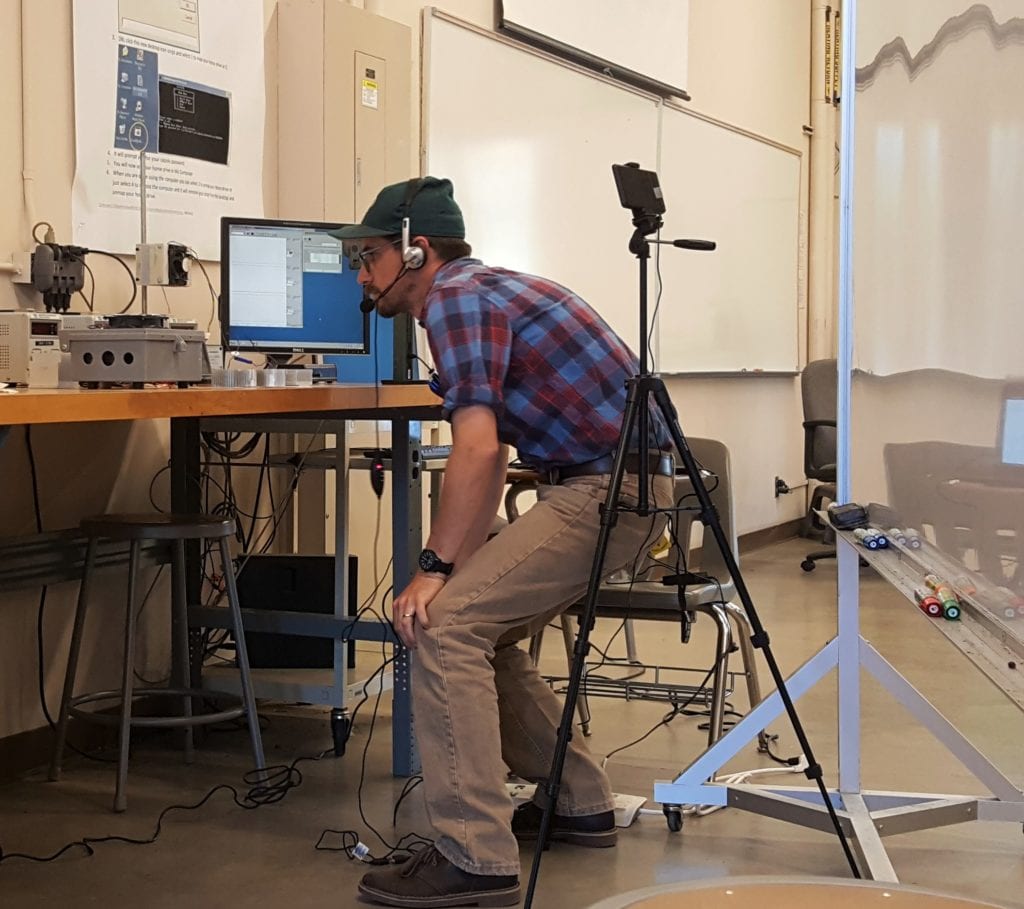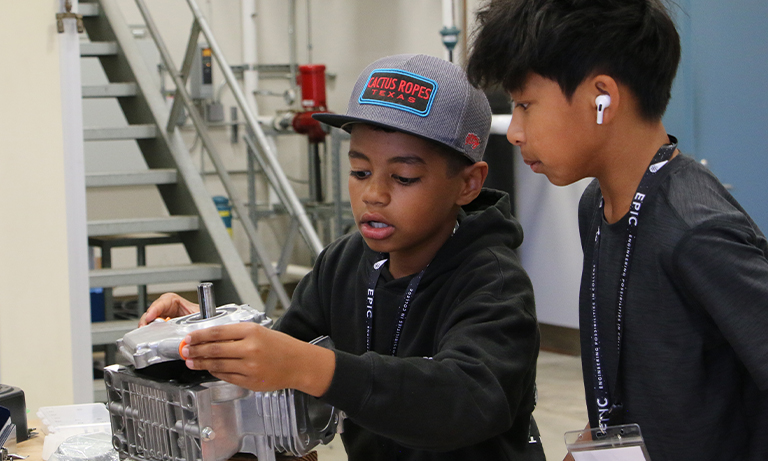In a lonely lab on a mostly deserted Cal Poly campus, Hans Mayer readies his three camera angles, launches his Zoom meeting and goes live with his virtual lab.
“Today, we’re going to run Lab Six, which is the vapor compression refrigeration cycle,” Mayer, an assistant professor in the Mechanical Engineering Department, tells his audience – a class of 16 students watching from their homes. “And we’re going to start with two views, which you should be able to see on your screen now.”
On one side of the screen, students see numbers from a data acquisitions system, and on the other is a yellow panel featuring various attached equipment, including a compressor, condenser, and several gages that the students will record values from. Currently offscreen is a whiteboard, which Mayer’s web cam will capture when he draws graphs for his heat transfer course, ME 350.
“Okay, so this is what you would be standing in front of if you were in the lab with me today,” he tells students.
While virtual teaching clearly has its limitations – particularly at a university known for its Learn by Doing ethos – Mayer has worked hard to recreate the lab experience, presenting students with multiple camera angles he navigates live.
“Two cameras are controlled by my laptop that I can switch between in Zoom, and the third camera is my cell phone,” he said. “This helps to look at different parts of an experiment simultaneously, but I often switch to viewing a whiteboard so that the students can see that I am there and interact with me by asking and answering questions.”
Online courses existed at Cal Poly long before sheltering-at-home orders promoted a campus shutdown in March. But relatively few faculty have taught them, forcing faculty to apply Learn by Doing to their own work.
“I wanted to give my students the closest possible thing to actually being in the lab, and I would feel like I was negligent in my responsibilities to them if I didn’t do this,” Mayer said, adding that many faculty are in circumstances which prevent them from doing the same. “We’re all trying our best for our students, whatever form that may take.”
Before the lab began, he sent an email to students, quoting baseball great Pete Rose — “I’d walk through hell in a gasoline suit to play baseball.”
His email added a personal note: “Well, when they originally told us to stay clear of campus, my thought was that I’d make the same walk to be in the lab.” He was delighted, he added, when he learned faculty would have an opportunity to teach virtual classes from campus. “Unless things change again, I plan to be there for you every Thursday broadcasting live.”

To hone his labs, Mayer consults weekly with peers Jim LoCascio, Mark Hontz, and Travis McDaniel. And others have taken notice.
“Our curriculum is laboratory heavy, and we consider that a signature strength for us,” said John Chen, who teaches a lecture portion of the course. “In this time, we struggled to figure out how to conduct remote labs and still have as genuine an experience as possible for our students.”
Dominic Duran, a mechanical engineering student, said the multiple camera approach has been effective, especially compared to single-angle presentations.
“It’s both difficult and boring to stare at the same frame for two or three hours,” he said. “Not only that, but often times, there are visual observations that must be made to draw connections between concepts reinforced by the lab.”
Virtual learning has been challenging, Duran said, admitting he’s already burnt out by it. Being on campus provides structure and organization, he said. And while virtual labs help mitigate that, even then, being on campus working hands-on allows students to learn from mistakes, Duran said.
Mayer agrees – and wants the recorded labs from this quarter deleted so future students can partake in their own real-time experiences.
“I want to think ahead to when we can all get back to be in the lab, where students can be flipping switches, turning dials, and getting a feel for this without the barrier of a screen,” he said. “This is why students come here, and I think they need that.”


